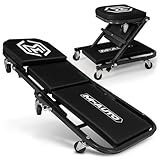How to Fix Ford F150 Air Conditioning: Quick and Easy Troubleshooting Steps

Driving a Ford F150 on a hot summer day without a properly functioning air conditioning system can feel like sitting in a sauna on wheels. The cabin heat can quickly become unbearable, making even short trips stressful. Fortunately, fixing your Ford F150 air conditioning isn’t always complicated. With some basic knowledge, a few tools, and a bit of patience, you can troubleshoot and resolve common AC problems yourself. This guide will walk you through practical steps to restore your truck’s cooling power, helping you stay comfortable and safe while driving.
Properly functioning air conditioning is not just about comfort—it also plays a role in safety. Excessive heat can cause fatigue and reduce concentration, putting you at risk during long drives. By learning how to fix Ford F150 air conditioning, you gain the ability to identify and solve common issues before they become costly repairs. From checking refrigerant levels to inspecting the compressor, each step is essential to maintaining your truck’s AC performance.
In This Article
- 1 Understanding Common Ford F150 Air Conditioning Problems
- 2 Checking the Electrical System
- 3 Diagnosing Refrigerant Leaks
- 4 Assessing the Compressor Function
- 5 Inspecting the Condenser and Evaporator
- 6 Addressing Airflow Problems
- 7 Performing a System Recharge
- 8 Seeking Professional Assistance
- 9 Preventive Maintenance Tips for Ford F150 Air Conditioning
- 10 FAQs About Ford F150 Air Conditioning
- 11 Conclusion
Understanding Common Ford F150 Air Conditioning Problems
Before diving into repairs, it’s crucial to understand the types of problems that affect your Ford F150 air conditioning. These systems are generally reliable, but wear and tear over time can lead to issues that compromise cooling efficiency. Common AC problems in a Ford F150 include:
-
Low refrigerant levels: Often caused by leaks in the system.
-
Faulty compressor: This critical component may fail, preventing the AC from circulating cold air.
-
Blown fuses or bad relays: Electrical issues can stop the system from activating.
-
Dirty or clogged air filters: Restrict airflow and reduce cooling.
-
Leaks in the condenser or evaporator: Can lead to loss of refrigerant and poor AC performance.
Symptoms of a failing AC system can vary. You might notice weak airflow, strange hissing or grinding noises, unpleasant odors when the AC is on, or even the AC clutch not engaging. Recognizing these signs early can prevent more significant damage and save you time and money.
Checking the Electrical System
A surprising number of AC problems in the Ford F150 are electrical in nature. Even if the compressor and refrigerant levels are fine, a blown fuse or faulty relay can prevent your air conditioning from functioning. Here’s how to perform a basic electrical check:
-
Inspect the fuses: Use a multimeter set to continuity mode to test the AC-related fuses. Remove the fuse and check for signs of damage or a broken filament. Replace any blown fuses with ones of the correct rating.
-
Test the relays: Locate the AC relay in the power distribution box and test it with a multimeter. A relay failing the continuity test should be replaced.
-
Check wiring connections: Loose or corroded wires can prevent proper AC operation. Ensure all connectors are tight and clean.
A simple electrical inspection often resolves AC problems without the need for expensive repairs. Many Ford F150 owners are surprised how often a small blown fuse or corroded connector is the root cause of a non-functioning AC.
Diagnosing Refrigerant Leaks
One of the most common reasons a Ford F150 air conditioning system loses its cooling ability is low refrigerant. Refrigerant leaks reduce the system’s efficiency and can damage components if left unchecked. Signs of a refrigerant leak include:
-
Reduced cooling performance even at maximum AC settings
-
Visible oil stains near AC components
-
Hissing sounds coming from the system
To accurately detect leaks, a refrigerant leak detector is highly recommended. These tools sense refrigerant escaping into the air and help pinpoint the leak. Once the leak is located, you have a few options:
| Type of Leak | Repair Method | Notes |
|---|---|---|
| Minor leak | Apply sealant or replace O-rings/gaskets | Usually inexpensive and simple |
| Major leak | Replace damaged component | May require professional service |
After repairing the leak, the system must be recharged with refrigerant to restore optimal cooling. This step is critical, as running the AC with insufficient refrigerant can lead to compressor failure.
Assessing the Compressor Function
The compressor is the heart of your Ford F150’s air conditioning system. It pressurizes and circulates the refrigerant, enabling cold air production. If the compressor fails, the AC will not function regardless of other conditions. To check if the compressor is working:
-
Start the engine and turn on the AC.
-
Observe the compressor clutch. It should engage and disengage smoothly.
-
Listen for unusual noises such as grinding or squealing, which indicate internal damage.
If the compressor is faulty, options vary depending on the problem. Minor issues, such as a failing clutch or pulley, can sometimes be repaired. Severe damage may require a full compressor replacement. Consulting a professional mechanic is advisable in such cases, as improper handling can damage other AC components.
Inspecting the Condenser and Evaporator
Two critical components of the Ford F150 air conditioning system are the condenser and evaporator. The condenser, usually located at the front of the truck, dissipates heat from the refrigerant. The evaporator, inside the dashboard, absorbs heat from the cabin air. Common issues include:
-
Clogged or dirty evaporator: Reduces airflow and cooling efficiency.
-
Leaking condenser: Leads to loss of refrigerant and decreased performance.
-
Physical damage from debris: Can obstruct airflow or puncture the system.
Inspecting these components involves visually checking for leaks, blockages, or bent fins on the condenser. In some cases, cleaning the evaporator or replacing a damaged condenser may be necessary. Proper maintenance ensures these components function optimally, keeping your cabin cool even on the hottest days.
Addressing Airflow Problems
Sometimes the Ford F150 air conditioning feels weak, not because of refrigerant or compressor issues, but due to airflow problems. Restricted airflow can be caused by a few simple issues:
-
Dirty cabin air filter: A clogged filter limits the amount of air entering the cabin. Replace it if it looks dark or dusty.
-
Faulty blower motor: Check that the motor runs smoothly without strange noises. Replace if necessary.
-
Obstructed air ducts: Dust, debris, or even small critters can block air circulation. Use compressed air or a vacuum to clear the ducts.
Maintaining clean filters and functional blower motors significantly improves cooling performance. Regular inspection every few months helps prevent airflow issues before they impact your driving comfort.
Performing a System Recharge
One of the most common reasons your Ford F150 air conditioning may not be cooling properly is low refrigerant. Performing a system recharge can often restore cooling performance and is relatively straightforward with the right tools. Here’s how to do it safely:
-
Check refrigerant levels first: Use a gauge to determine if the system is low. Do not add refrigerant blindly; overcharging can damage the compressor.
-
Wear protective gear: Gloves and safety glasses are essential, as refrigerant can cause frostbite or eye injuries.
-
Use a proper recharge kit: Most kits include a can of refrigerant, a hose, and a pressure gauge. Follow the instructions carefully.
-
Connect the hose to the low-pressure port: Do not use the high-pressure side, as it can be dangerous.
-
Add refrigerant gradually: Monitor the pressure gauge to avoid overfilling.
-
Test the system: Once filled, turn on the AC and check that cold air is blowing consistently.
A refrigerant recharge not only restores cooling but also helps your system run more efficiently. Doing this regularly, especially before summer, can prevent unexpected breakdowns and extend the life of your AC components.
Seeking Professional Assistance
While many Ford F150 air conditioning problems can be fixed at home, there are situations where professional help is the safest and most effective choice. Here are scenarios when you should consider visiting an automotive technician:
-
Persistent leaks that you cannot locate or repair
-
Compressor failure or severe damage
-
Electrical issues that involve complex wiring or multiple components
-
Major condenser or evaporator replacement
Professional technicians bring expertise, specialized tools, and experience with Ford F150 AC systems. Their services often include:
-
Accurate diagnostics: Using advanced equipment to pinpoint issues quickly.
-
Quality repairs: Ensuring components are correctly installed and functioning.
-
Guarantees on work: Peace of mind that the problem won’t return immediately.
While DIY troubleshooting is rewarding, knowing when to call a professional ensures your truck’s AC system is handled safely and efficiently.
Preventive Maintenance Tips for Ford F150 Air Conditioning
Preventive maintenance is key to avoiding AC problems in your Ford F150. Regular care can save you money and keep your cabin comfortable throughout the year. Here are practical tips:
-
Check refrigerant levels annually: Prevent low refrigerant from damaging the compressor.
-
Replace the cabin air filter regularly: This maintains airflow and removes dust and allergens.
-
Inspect belts and hoses: Look for cracks or wear that could lead to system failure.
-
Clean the condenser and evaporator: Keep debris, leaves, and dirt away from critical components.
-
Run the AC periodically: Even in winter, running the system helps lubricate the compressor and prevent seals from drying out.
By following these preventive steps, you not only maintain comfort but also extend the life of your AC system.
FAQs About Ford F150 Air Conditioning
1. Why is my Ford F150 blowing warm air instead of cold?
Warm air is usually a sign of low refrigerant, a failing compressor, or blocked airflow. Start by checking refrigerant levels and the cabin filter.
2. How often should I replace the cabin air filter?
Typically, every 12,000–15,000 miles, or sooner if driving in dusty conditions. A dirty filter restricts airflow and reduces cooling efficiency.
3. Can I recharge the AC system myself?
Yes, but only if you follow safety instructions and use a proper recharge kit. Be careful not to overfill the system, which can damage the compressor.
4. What are signs of a faulty AC compressor?
Common signs include the AC clutch not engaging, unusual noises, and weak airflow even with full refrigerant.
5. How do I know if the condenser is damaged?
Look for visible leaks, bent fins, or reduced cooling performance. Sometimes cleaning the condenser can improve airflow if it’s blocked by debris.
6. Is it dangerous to drive with a leaking AC system?
A minor leak is not immediately dangerous, but a significant refrigerant leak can reduce cooling and damage the compressor. Fix leaks promptly.
7. How much does it cost to repair Ford F150 AC problems?
Costs vary widely. Simple fixes like fuses or filters are inexpensive, while compressor or condenser replacement can cost several hundred dollars.
8. How can I prevent AC problems in the future?
Regular maintenance, periodic refrigerant checks, and keeping filters clean are the best ways to prevent issues.
Conclusion
Fixing your Ford F150 air conditioning doesn’t have to be intimidating. By understanding the common problems, performing basic inspections, and following troubleshooting steps like checking the electrical system, diagnosing refrigerant leaks, assessing the compressor, and maintaining airflow, you can solve many AC issues on your own.
Regular preventive maintenance is the key to ensuring your truck stays cool, efficient, and comfortable. Remember to replace filters, clean components, check refrigerant levels, and run the system periodically. For more complex problems like major leaks or compressor failures, seeking professional assistance is the safest route.
Taking control of your Ford F150 air conditioning system not only improves your driving comfort but also helps protect your investment. With these tips and strategies, you can enjoy cool, refreshing air during even the hottest drives, keeping every journey comfortable and stress-free.






